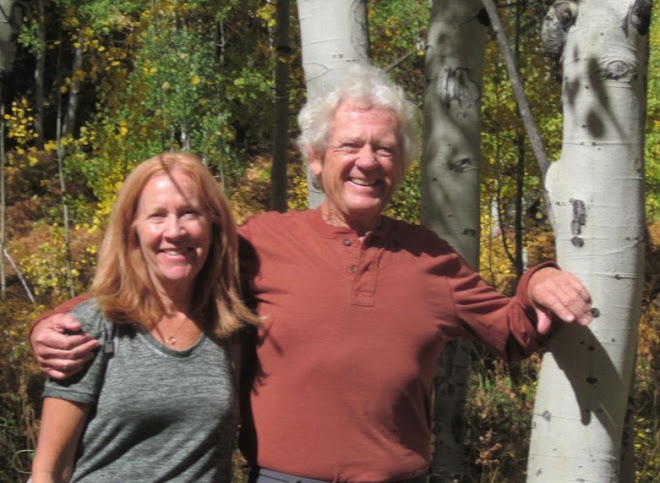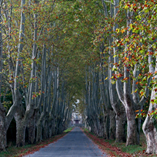Our next adventure to France began with the French Riviera. Images of the warm, blue Mediterranean Sea, rich and famous people, and towns of Nice, Cannes, and St Tropez were always a dream and all materialized as we arrived. The Cote d’Azur (literally “Azure Coast”) is in SE France between the Italian border and the Rhone River. The weather was perfect, the crowds thin, and many people were on the beach and swimming in the sea. We walked along the Promenade de Anglais (‘the Walkway of the English') in Nice which borders the sea. The beaches were pebbles, topless was common, and one man took his already small suit off, wrung it out for several minutes, shook it out to dry, and slowly put it back on. He was changing right in front of us with no worries. It reminded us of how uptight America has become. Nice has pastel painted buildings, pedestrian shops, a port, and many beaches with long promenades.
Nice was founded in the 5th century BC from Greek merchants and is the gateway between the Mediterranean and the Alps. The natural beauty of the Nice area and its mild Mediterranean climate came to the attention of the English upper classes in the second half of the 18th century, when an increasing number of aristocratic families took to spending their winters there. For decades now, the picturesque Nicean surroundings have attracted not only those in search of relaxation, but also those seeking inspiration. The clear air and soft light has been of particular appeal to some of Western culture's most outstanding painters.
We stayed in the nearby village of Vence instead of staying in the big city of Nice, on the top of the hills with bird’s eye views of Nice and the Mediterranean. The road to it was UP, windy and steep with hairpin turns, some of which required 2 swipes even with our little Fiat. Breakfast out by the pool with croissants, jam, French bread, cantaloupe, yogurt, orange juice and fantastic coffee. The village of Vence has an Old Town with medieval walls still surrounding the pedestrian-only section and was fun to explore. On the way down to Nice, we passed by St Paul de Vence: a medieval old walled city with ramparts that is mostly a city of art galleries and restaurants now.
We explored towns along the coast and found Cannes (film festival) and St Tropez (Bridgette Bardot) definitely for the rich and high society wanting to do some high end shopping. We much preferred Nice, Antibes (home to Charlie Chaplin and Rudolph Valentino; waterskiing was started here in 1920), and especially Menton, near the Italian border, which is called a “poor man’s Nice,” unpretentious and lower prices.
Unique and a “must see” is Monaco, an independent country with its own monarchy, but which is run by France. Monaco is the second smallest independent state in the world after the Vatican and it has the highest per capita income in the world. The Monte Carlo Casino has become a symbol of “extravagant display and reckless dispersal of wealth". One can imagine a tuxedo bedecked James Bond sitting at the Baccarat table. The Casino was featured in Alfred Hitchcock’s To Catch a Thief (1954) featuring Grace Kelly (future Princess Grace of Monaco) and Cary Grant. In front of the casino were several Ferraris parked and doormen guarding the entrance. There were no cameras nor cellphones allowed inside. Patrons were dressed to the hilt, blinding all with the reflections from their gold and jewelry, and were, well, just dripping rich. The harbor of Monte Carlo (capital of Monaco) had some of the largest and most luxurious yachts anywhere in the world. The famous Grand Prix (started in 1929) is held here every May and runs past the port and up the hill past the Casino. The country and city were fun to see and was a place in which we did not fit.
We left the Mediterranean and travelled to the “Inland Riviera” next. Driving through Gorge du Verdon, the “Grand Canyon” of France and the deepest canyon in Europe (2200’ drop at the highest point) was truly beautiful. We drove on to Moustiers-Sainte-Marie, another walled city with many shops vistas, and restaurants. We hiked up to the Chapelle Notre Dame de Beauvoir for views of the city and back down. We drove through Luberon to Vaucluse with its beautiful valleys, farmland, & villages with fields of lavender plants, vineyards, olive trees, chestnut, cypress and citrus trees.
Avignon is another pedestrian-only Old Town, with ancient walls and ramparts surrounding it. The Palace of the Popes is the most famous landmark there, built in the Gothic style. Avignon was formerly called the second Rome, maybe because this was home to seven Popes and two “antipopes” (competing claim to be the Pope supported by a fairly significant faction of religious cardinals) who resided here during the Great Schism in the church during the Middle Ages (1309-1403.) The second main attraction in Avignon is the famous Pont St Benezet (bridge) across the Rhone River. It was built in the 12th century and has been damaged by floods repeatedly, and was rebuilt repeatedly up to the 17th century. It is known all over the world thanks to its famous song, Saint-Benezet bridge. Avignon was classified a World Heritage Site by UNESCO as were many other places we visited on this trip.
Provence, France is most well-known for its lavender fields. They had been harvested before we arrived, but we still saw some fields of purple. Shops sold lavender in every imaginable way including lavender butter and lavender ice cream (crème glacee, gelato, glacier-we ate them all!), which were surprisingly tasty. This region also has oceans of vineyards and olive trees, and charming villages perched on top of hills, all with the mild Mediterranean climate.
Van Gogh & Cezanne lived in this area. Peter Mayle, author, wrote A Year in Provence, which went viral and then prompted tourism in this area. Roman ruins are better in France than in Italy according to some. Romans were here in force as evidenced by ancient aqueducts and ruins. The town of Vaison-la-Romaine is Roman, medieval, and provincial all at once. Wealthy citizens of the Roman Empire built luxurious villas here in the 1st century of Christendom.
Other picturesque towns were Gordes, built in the 11th century; Roussillon is on top of Mt Rouge, and is ochre (iron oxide/clay) colored of red/yellow. La Coste which was another medieval rock paved and walled village. At the top of the hill were the ruins of a Chateau which was owned and lived in by Marquis de Sade for over 30 years. Pierre Cardin has restored and now owns the chateau. Les Baux is yet another medieval village and is called “one of the most beautiful villages in France.” The story goes that Balthazar, one of the 3 Magi (Wise Men/Kings), was born in Les Baux and the flag of Les Baux has one white star on it to commemorate Balthazar.
St Remy was yet another walled pedestrian Old Town that was charming. We saw the chateau where Nostradamus was born in 1503 and the sanitarium where Van Gogh spent one year, shortly before his suicide in St Remy. There we saw a replica of his bedroom, some of the places he painted from his bedroom window and from the area - primarily the olive trees, sunflowers, blue irises and the hills in the distance. One famous painting was “Two Holes in the Rock” where we actually hiked in his footsteps.
Folks were harvesting the grapes as it was that time of year and it was fun to watch – some are hand-picked and some are machine-picked. We hiked through the vineyards, we watched their harvesting, we watched them load the trucks and unload the grapes into the winery, and we drank their wines. We went to the top of Mount Ventoux, the highest massif in Provence, at 1912m or 6273 feet. It was a leg on the Tour de France 2013 race and had tons of bicyclists on it. It was windy, cloudy and cold at the top but the bikes kept coming. We saw many bicyclists following this portion of the Tour de France route.
We found the French people warm and helpful and most spoke some English. We saw France from the Roman influence, medieval times, and up through modern day. Lavender and Provence spices could be smelled in the air and around the outdoor markets. The food and drink were superb and the chocolate and pastries were divine. Cheese and wine abound. Viva la France!
















